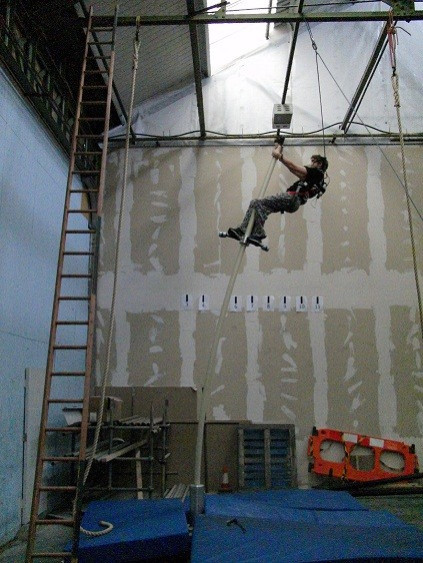Parkour Helps Scientists Understand Why Orangutans Sway Through Trees

Scientists studying how orangutans navigate through the treetops are using an unconventional stand-in for the great ape: the roof-jumping, wall-hopping, urban gymnast practitioners of parkour, also known as free runners.
Lewis Halsey of the University of Roehampton in London presented his research on Monday at a meeting of the Society for Experimental Biology in Salzburg, Austria. The work has not yet been published in a peer-reviewed journal.
Halsey and his colleagues are trying to figure out why orangutans, which are many times larger than other tree-dwelling creatures, spend so much time in the trees. They're also looking to figure out how orangutans can move through the trees fueled by a relatively low-energy diet of mostly fruit.
But the researchers have found it hard to get actual orangutans to wear the equipment they need to measure energy expenditure. Enter the free runner.
Because primates are not easy to work with, estimates of energy expenditure have been very indirect, Halsey said in a statement Wednesday. We have gone a step closer to understanding these costs by measuring energy expenditure in a model primate -- the parkour athlete.
During the experiments, the parkour athletes wear masks and backpacks that measure their oxygen consumption as they swing and jump through an obstacle course designed to mimic a treetop environment.
Based on their data, the team found the most energetically efficient way to move through the trees is to sway back and forth on one tree until you get close enough to the next one to grab ahold of it. A tree has to be pretty stiff and unswayable before it's more efficient to jump from it to the next tree.
Heavier orangutans don't jump, and we may have an explanation why, Halsey said.
© Copyright IBTimes 2025. All rights reserved.





















